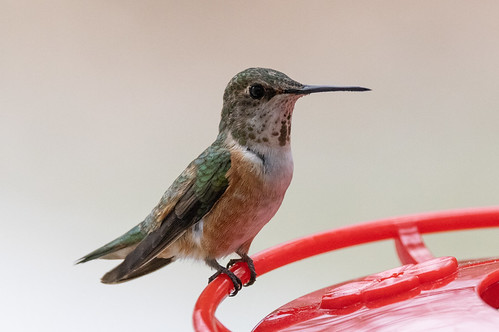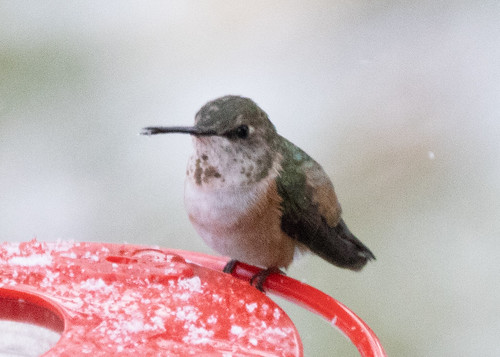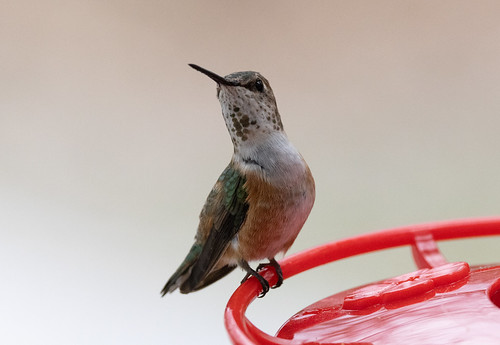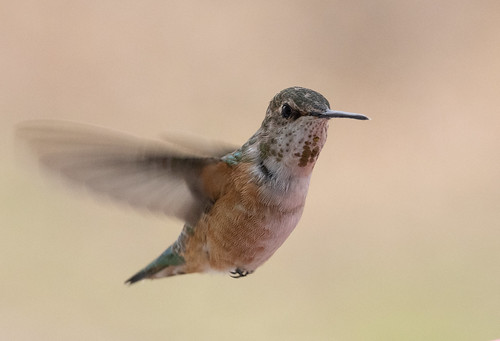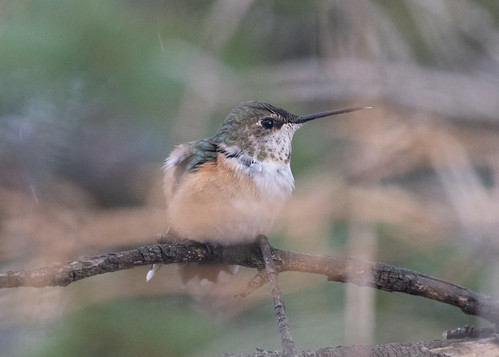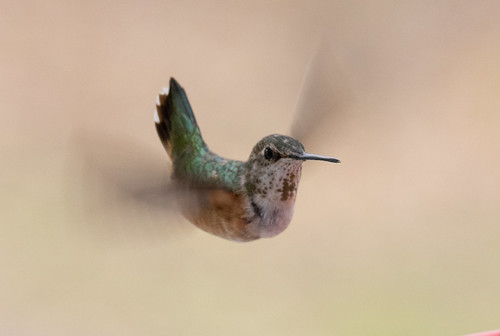At this very moment in the town of Duluth, Minnesota, it’s 10:26 am on Sunday, November 21, 2021. The temperature is 30º F—two degrees colder than last night’s low, and the wind chill is 16º. The west-northwest wind is howling at 25 mph with heavier gusts, and will worsen as the morning proceeds. The barometric pressure will be rising all day as the temperature drops. Tonight’s low is predicted to be 13º F. We were getting light snow since before sunrise, but the clouds started breaking 15 minutes ago. Even though astronomers claim this is still autumn, right now it’s one of those frigid but clear wintry days.
And at this very moment, I’m sitting in my home office with the window wide open. It faces east, so although I can hear the roar of the wind, it’s not blowing in. I have the door closed so the rest of the house won’t get cold, and I’m dressed warmly so I’m comfortable. And right this very moment, I’m looking out that open window into the cold world at a hummingbird visiting my feeders for at least the 13th time since 7:15.
People keep telling me to bring in my feeders to hasten her on her way. That could certainly force her hand, or wing, but I’m trusting that she knows how autumn unfolds into winter and understands what her migratory options are better than we do. Anyone who must bundle up to be outdoors would of course feel uncomfortable seeing such a tiny mite, naked as a jaybird, out there in the cold. It’s easy to forget that she’s an experienced adult who can fly off wherever and whenever she chooses. She’s already survived at least one previous fall migration and winter, and she appears perfectly healthy.
I’m of course worried about her, but I’d be way more concerned if several people, including me, hadn’t been watching her darting about catching insects in various trees when temps were in the mid-20s. That natural source of food is far more important to hummingbirds than most people realize. Sugar water is nothing but carbs, and hummingbirds always spend far more time each day seeking out insects than they do drinking sugar water, even when the most pleasant feeding stations are available. It may be November, but this bird is no exception.
Rachel Field’s poetic “Something told the wild geese/ it was time to go” is so evocative because we trust and thrill at the mysteries of nature and migration, at least when it comes to geese. Why can’t we extend that same courtesy to hummingbirds?
Now, at this very moment, it is 11:21 am, the temperature is 29º, and I haven’t seen her in 54 minutes. The last photo I took of her before she left is timestamped 10:27. There are many places she could be, so I can hardly assume that she’s left for good.
And sure enough, at this very moment, it is 11:22, and here she is again. And again at 11:45, and again at 11:58. Now it's 12:20 pm, and she's at the window feeder while the temperature is 26º and the windchill 10º.
The Rufous Hummingbird who visited my yard in 2004 didn’t leave until December 3, at some time between 10 and 11 am. That was the day after a blizzard and the morning after a night in the single digits. We know other Rufous Hummingbirds have survived overnight temperatures below zero and made it through whole winters in Ohio and Pennsylvania, and some have returned the following year. So even if my bird doesn’t leave today or tomorrow, she still has reasonably good prospects. Isn't that the best any of us can say?
I’m really glad she found this wayside on her journey, but I’m hoping against hope that in the coming days, as birders are scanning flocks of redpolls flying over, they’ll pick out one intrepid Rufous Hummingbird flying in that same sky, winging her way toward new adventures.
